NCERT Solutions Class 11 Maths Chapter 13 Exercise 13.1 Limits and Derivatives
NCERT solutions for class 11 maths chapter 13 exercise 13.1 limits and derivatives are based on limits and their algebra. The first section deals with the introduction of limits and their intuitive understanding. There are two types of limits - the right-hand and the left-hand because the value of a function could approach a number from the left or the right. Thus, the right-hand limit of a function f(x) is that value of f(x) which is dictated by the values of f(x) when x tends to ‘a’ (a number) from the right. Similarly, for the left-hand limit. If the right and left-hand limits coincide, we call that common value as the limit of f(x) at x = a and denote it by lim x→a f(x). NCERT solutions class 11 maths chapter 13 exercise 13.1 also teaches kids how to apply the concept of limits to polynomial and trigonometric functions.
There are 32 problems in this exercise. Some questions are simply based on the formulas while others require students to use their mathematical skills as they are pretty challenging. As long as children study the theory to this exercise in an organized manner they will be able to attempt all questions with ease. The PDF block of the class 11 maths NCERT solutions chapter 13 exercise 13.1 limits and derivatives can be accessed by the link given below:
☛ Download NCERT Solutions Class 11 Maths Chapter 13 Exercise 13.1
Exercise 13.1 Class 11 Chapter 13
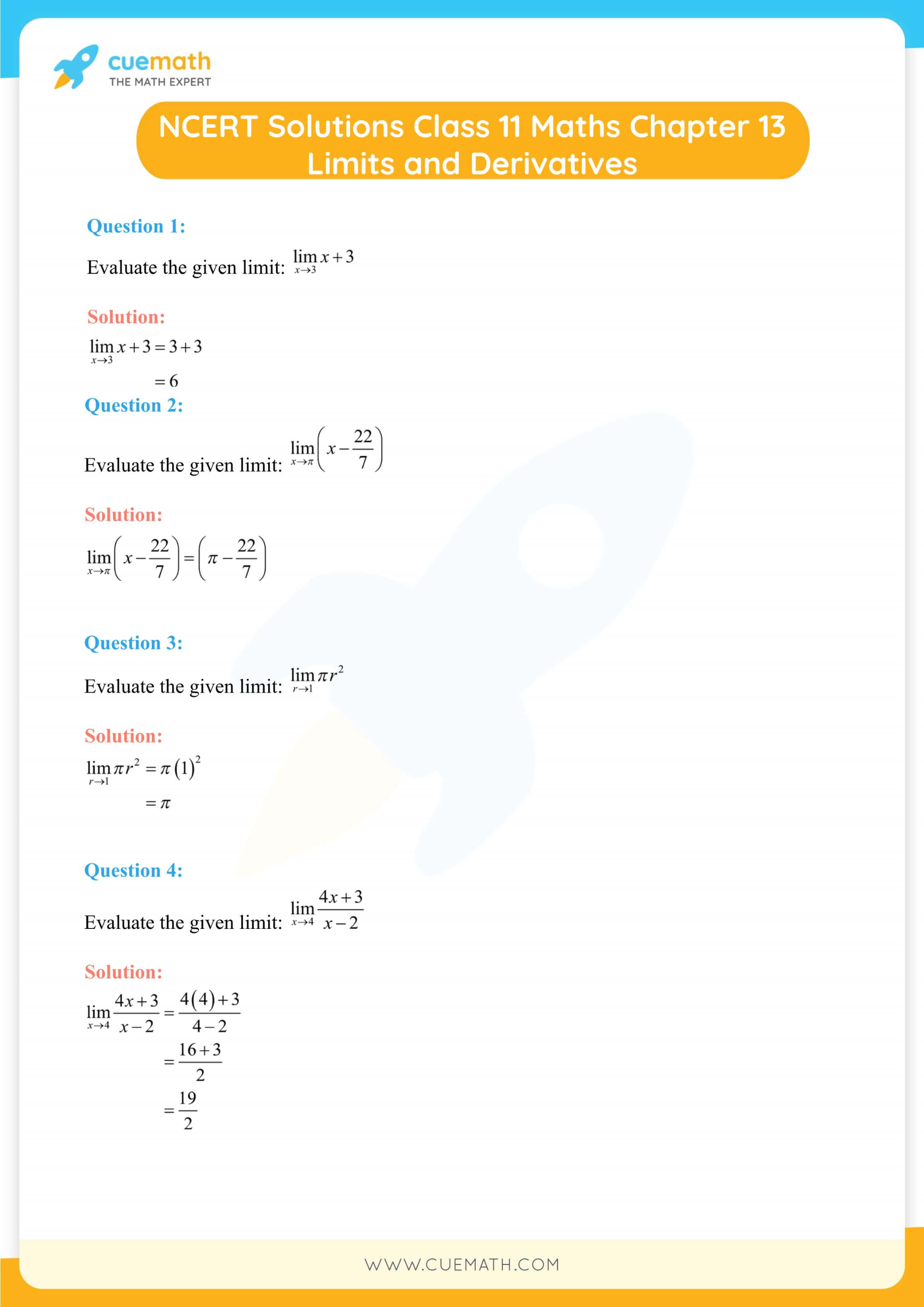
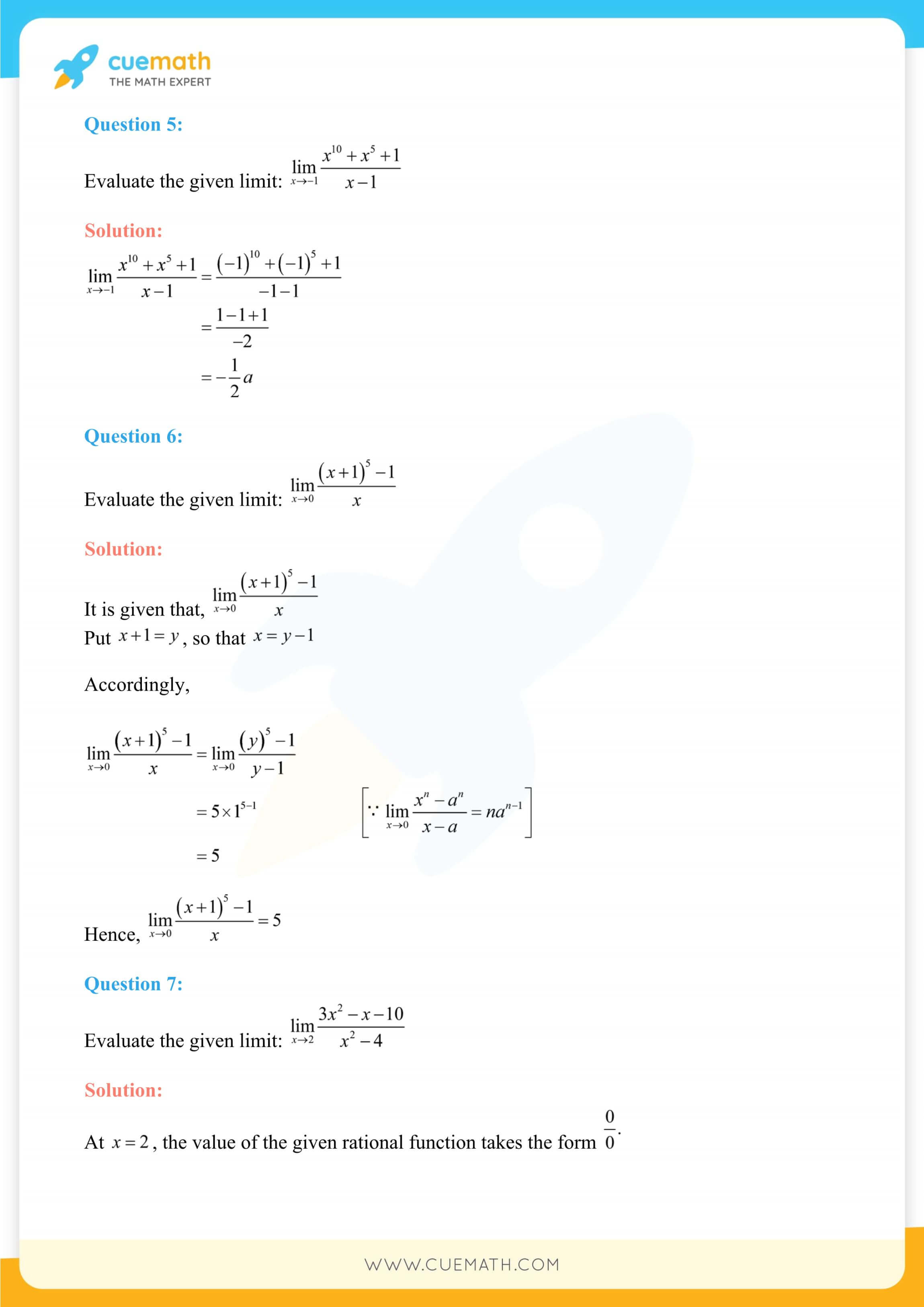
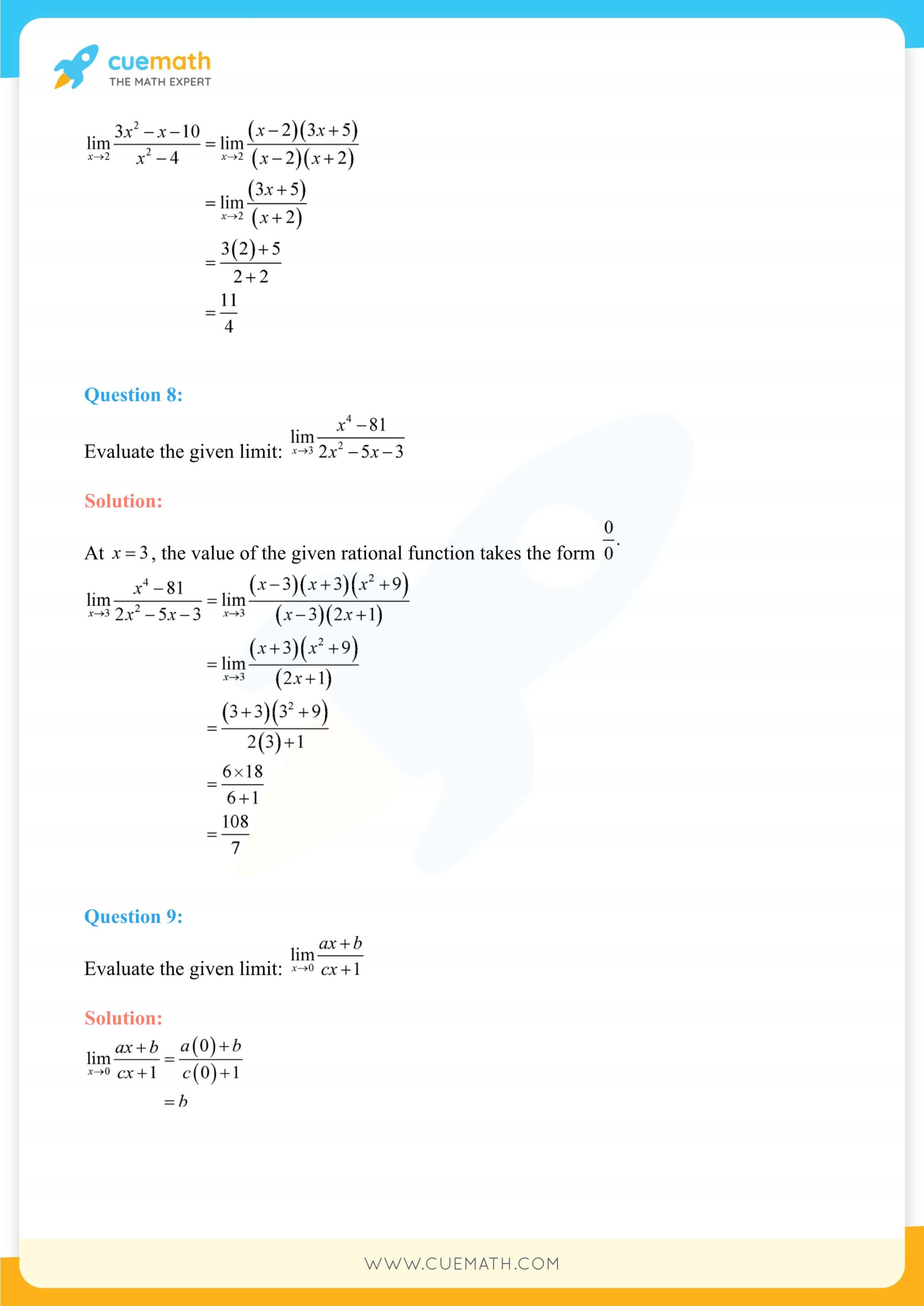
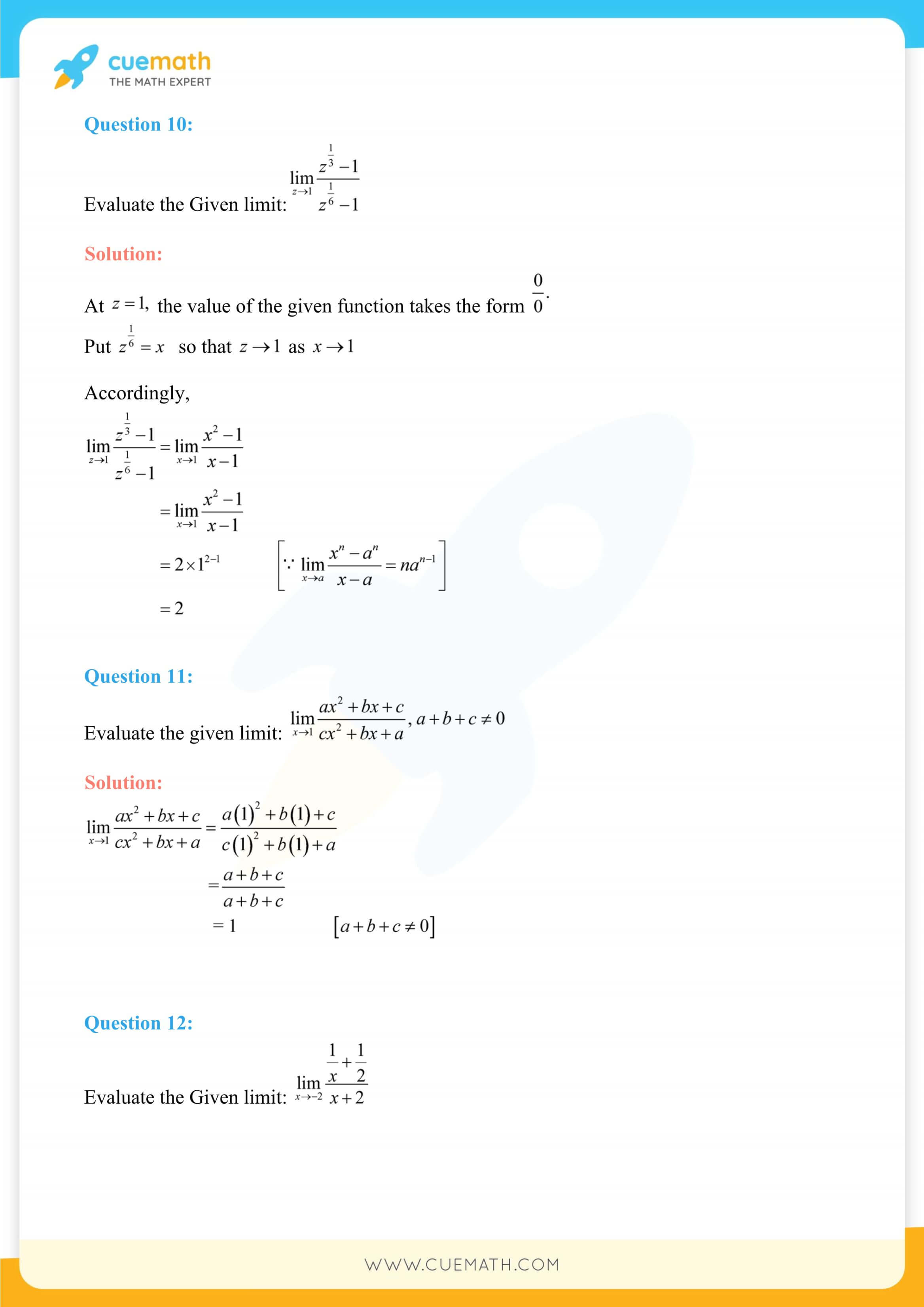
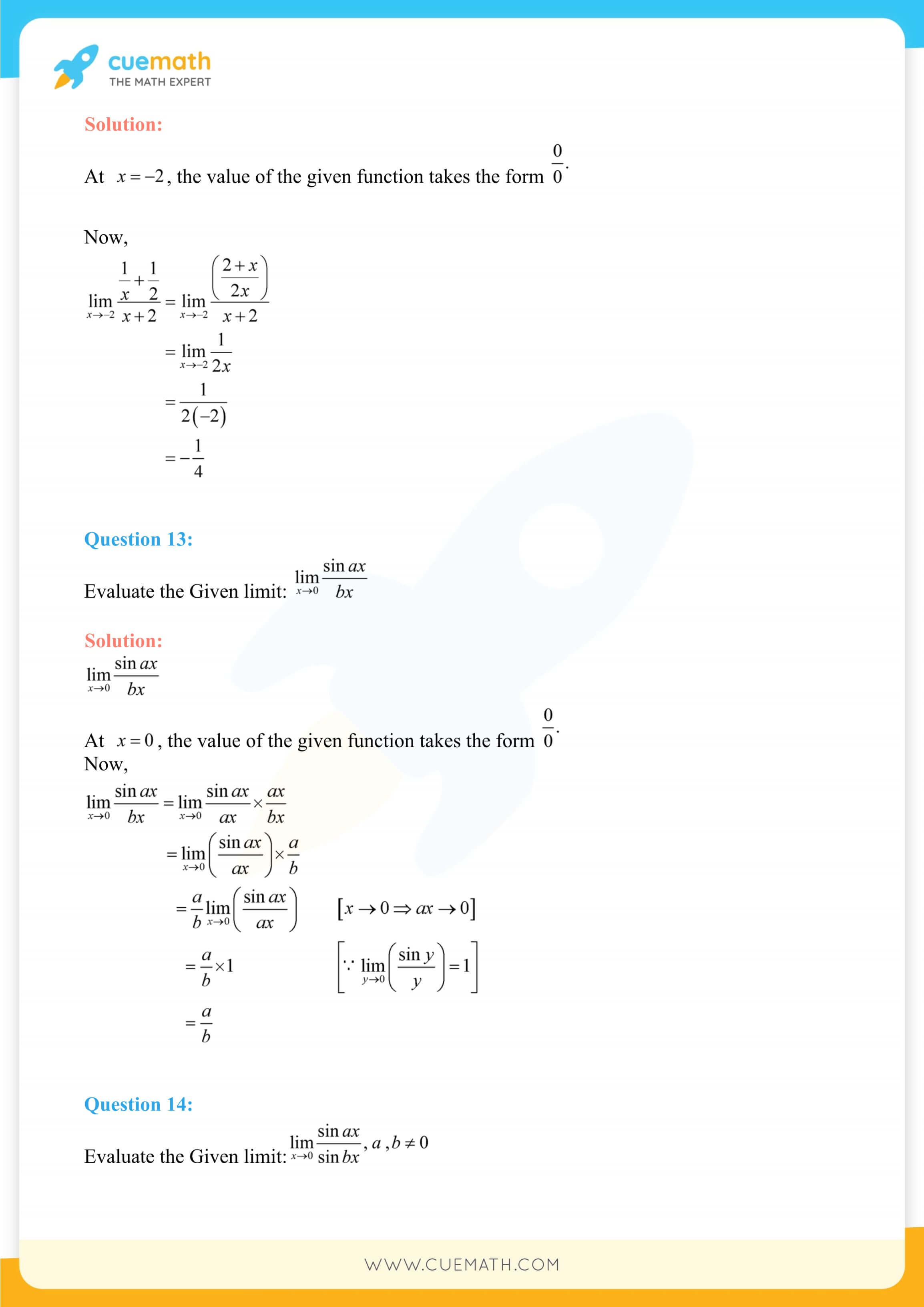

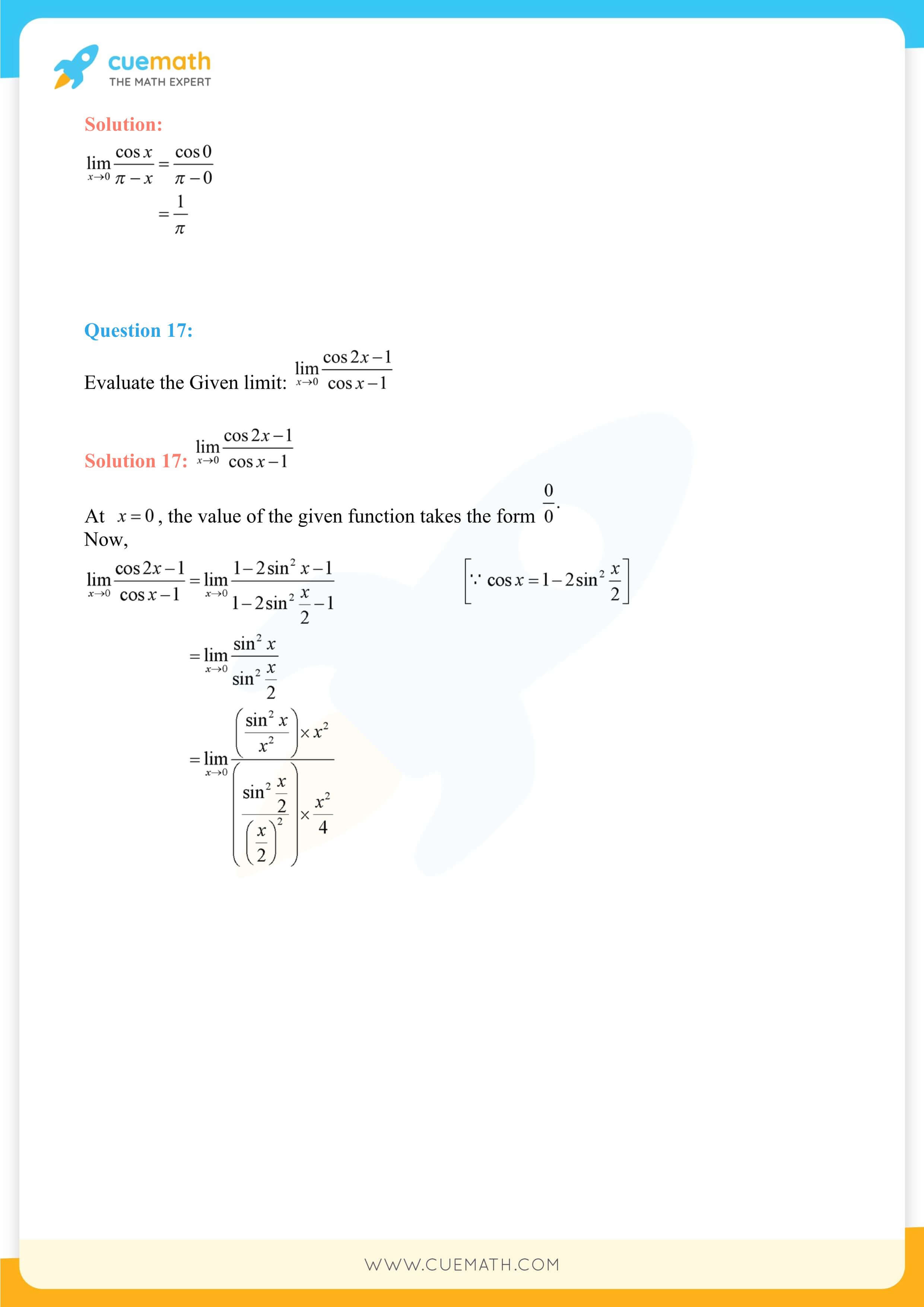
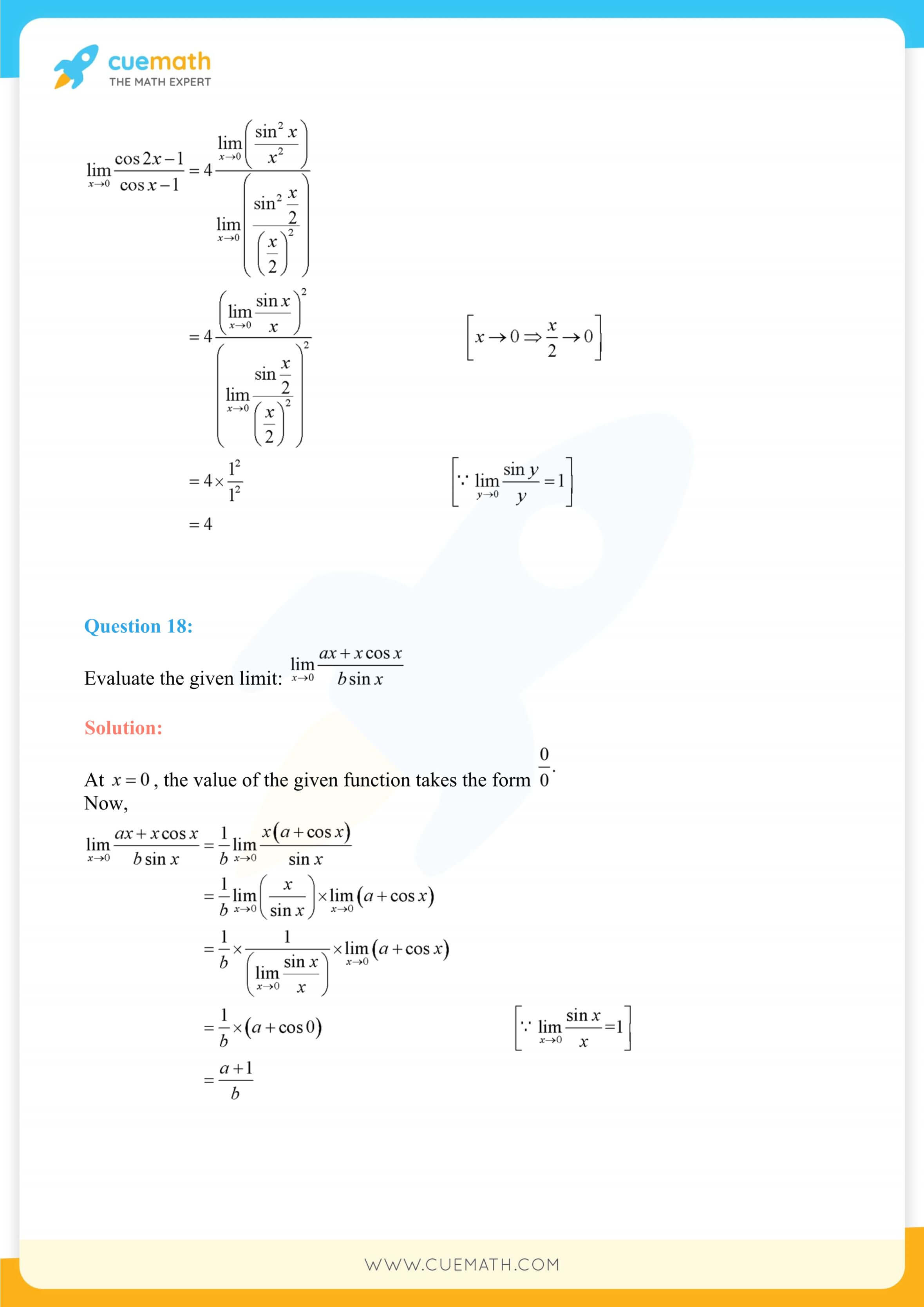
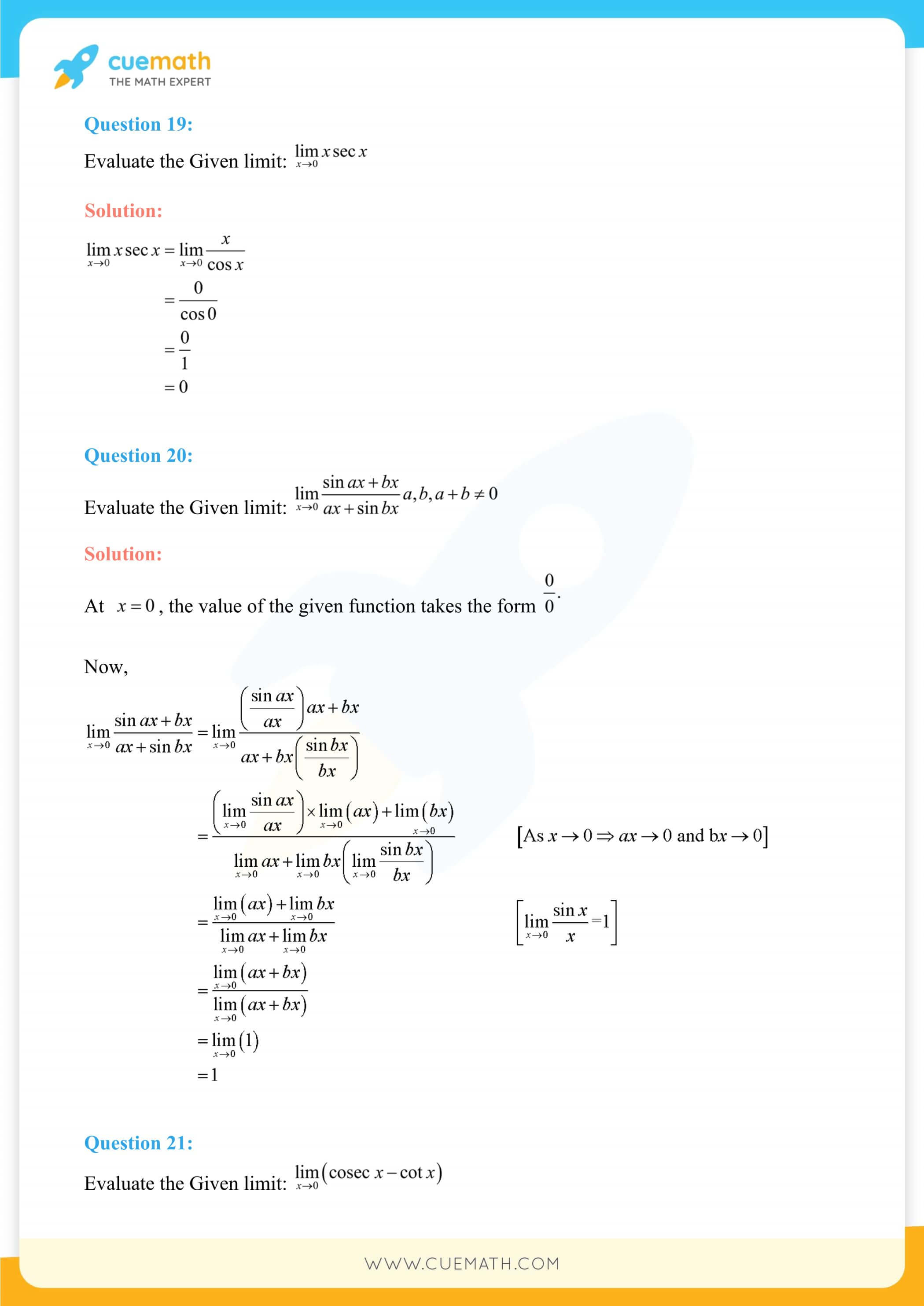
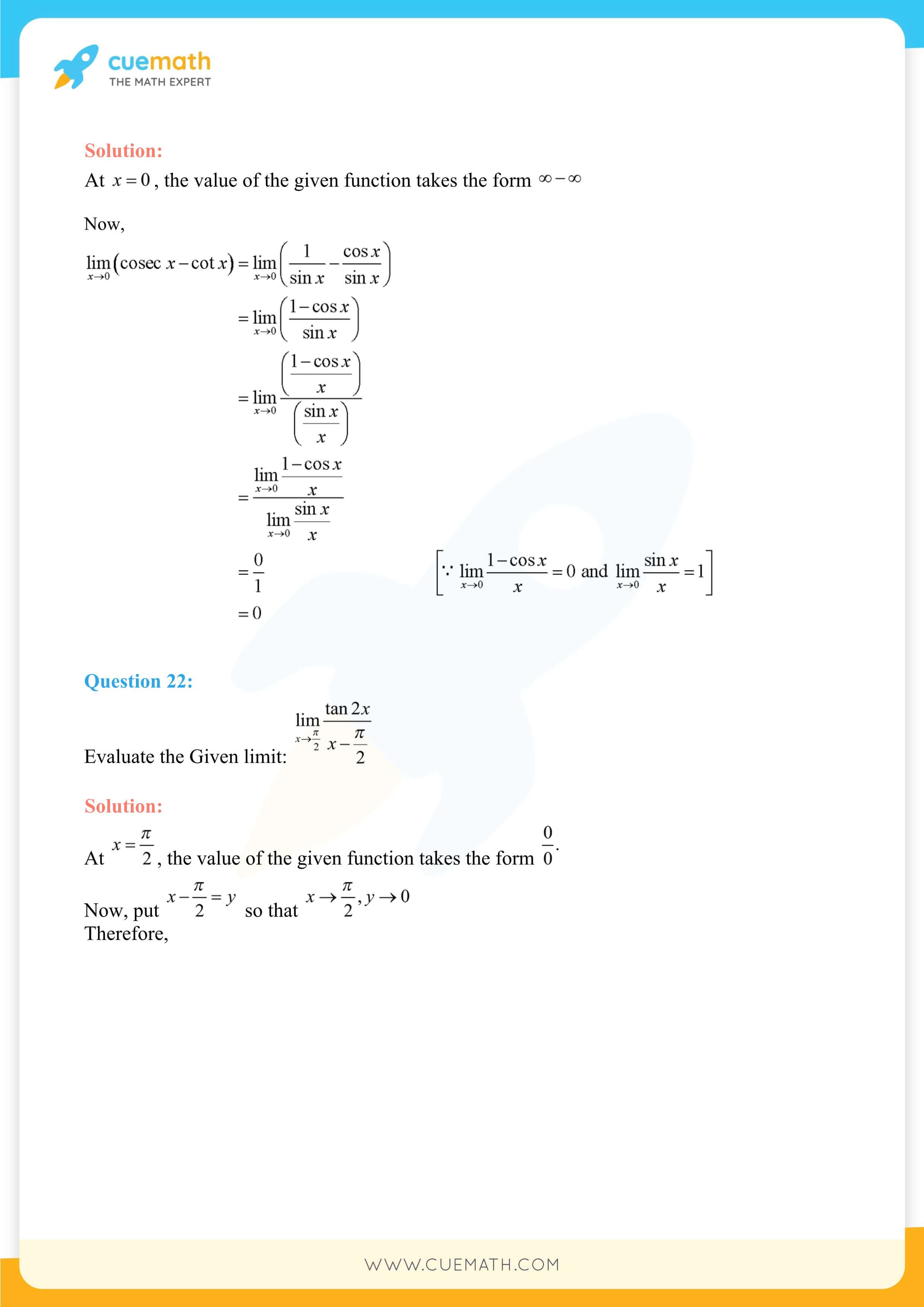
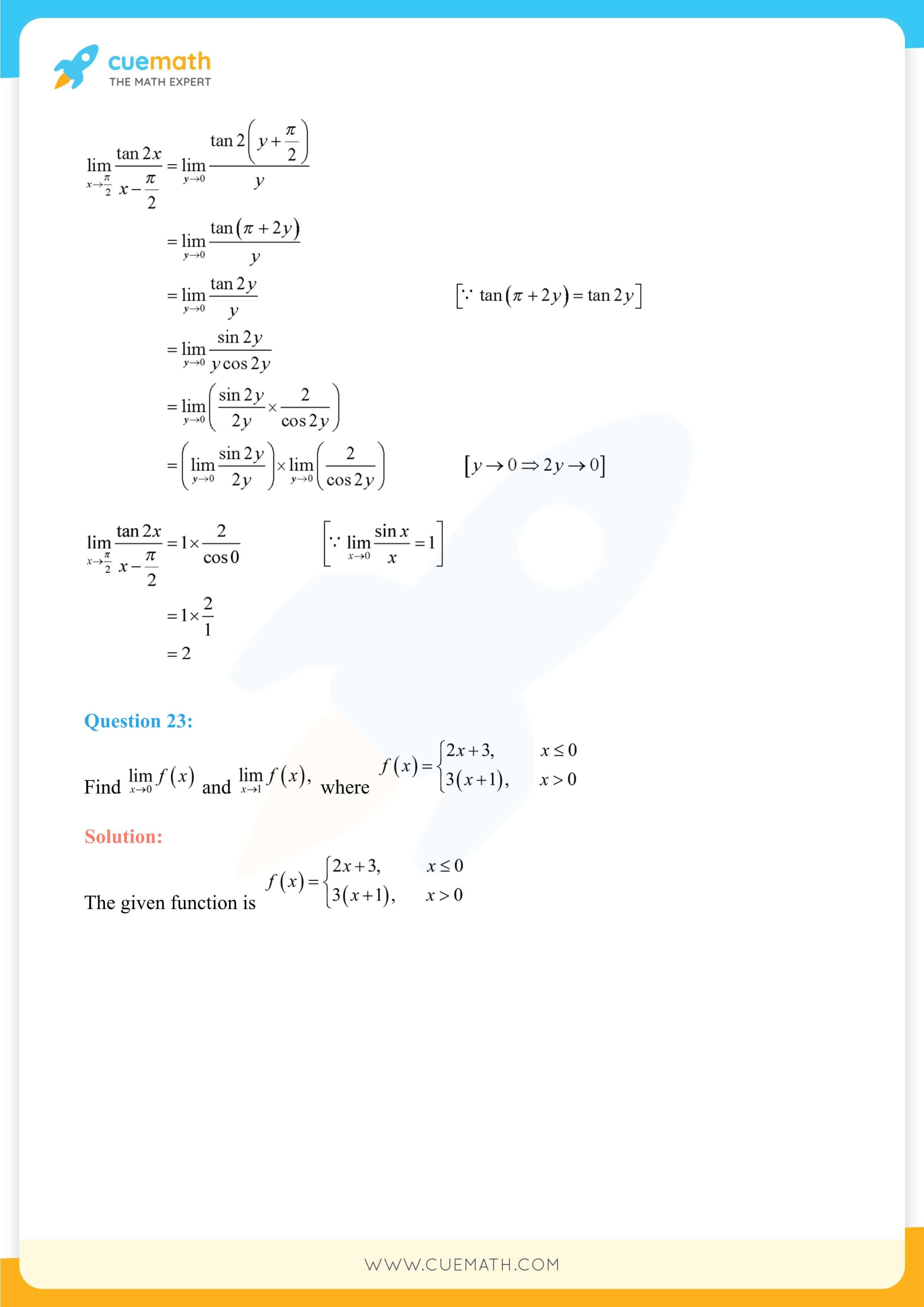
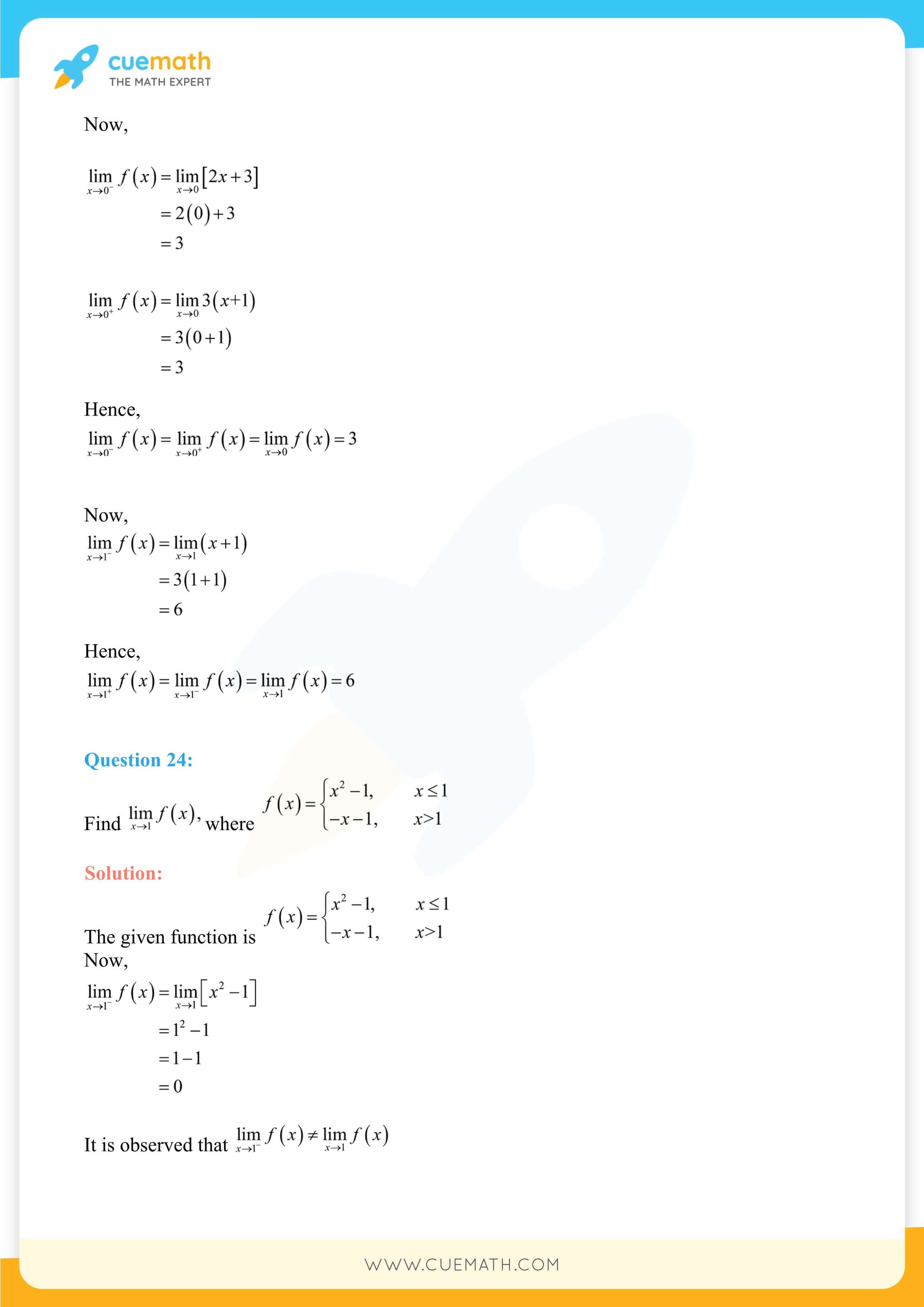
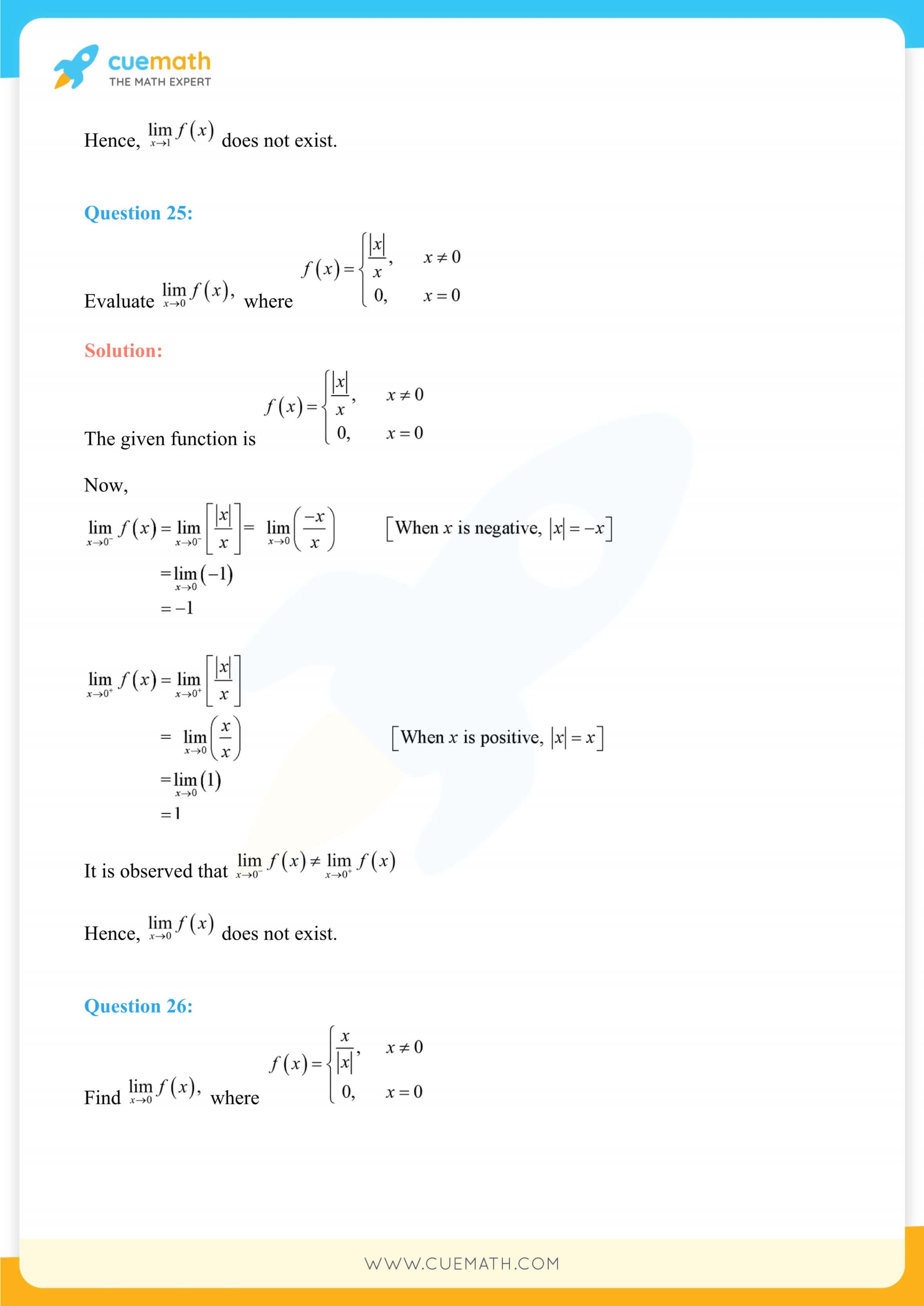
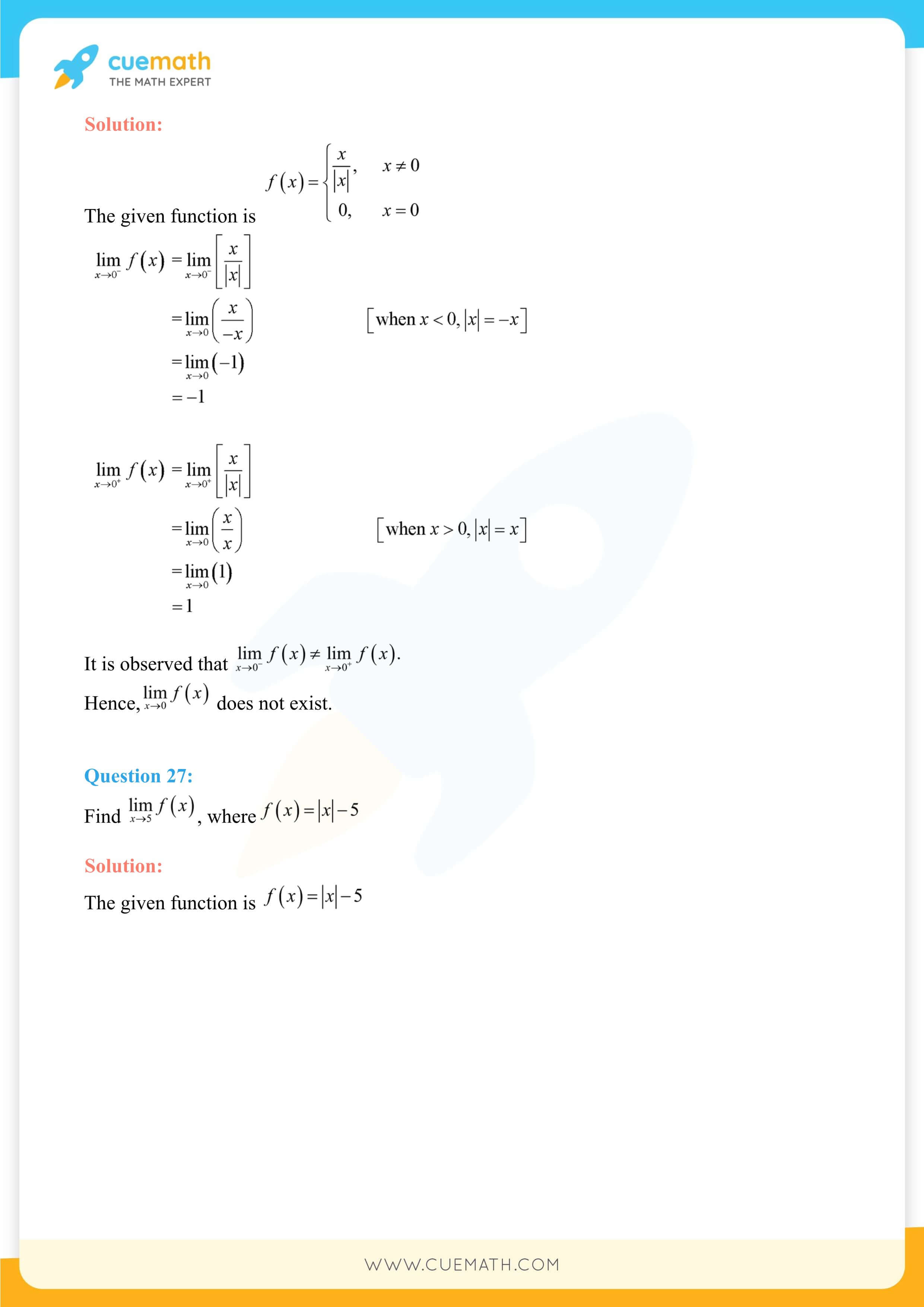
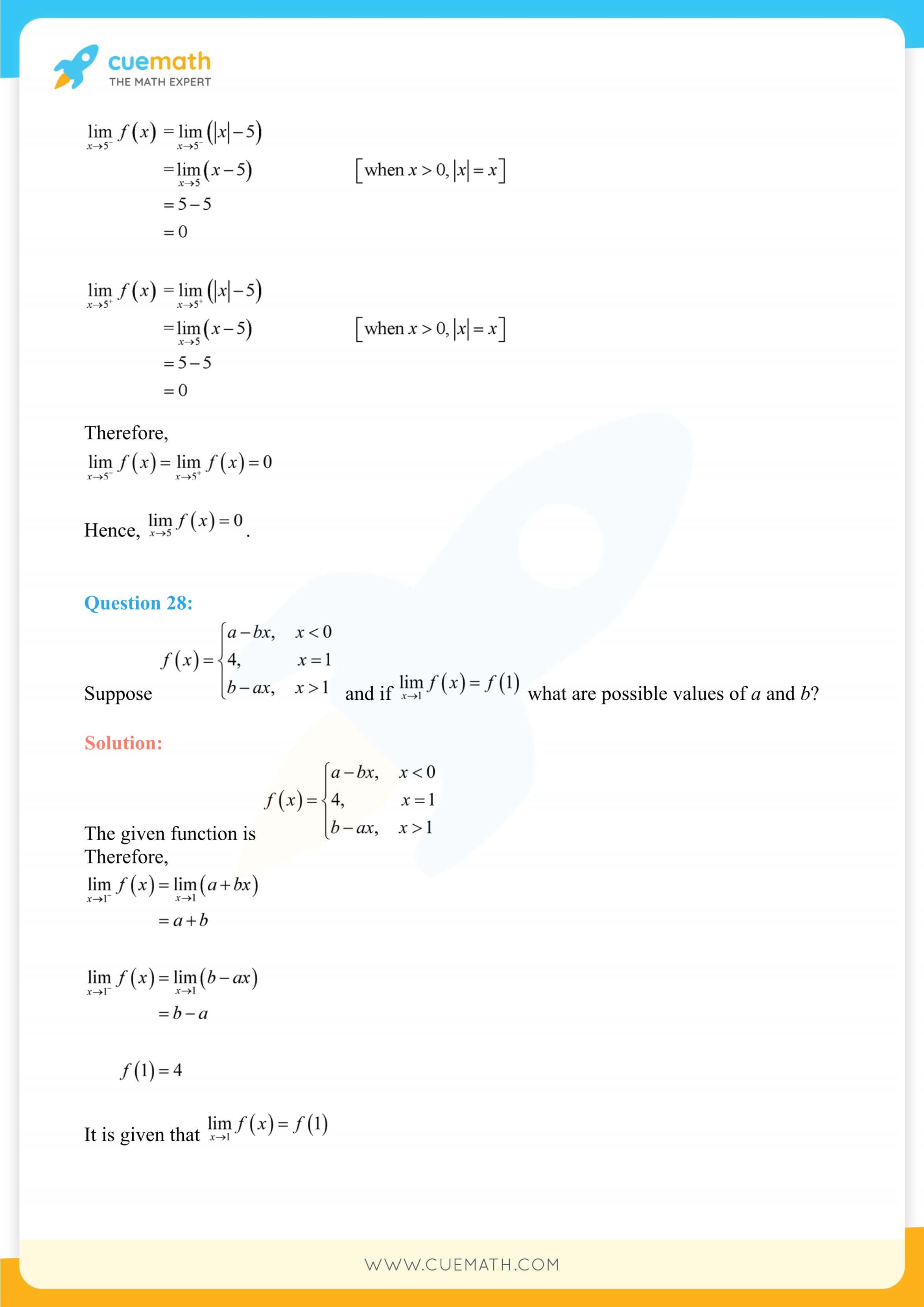
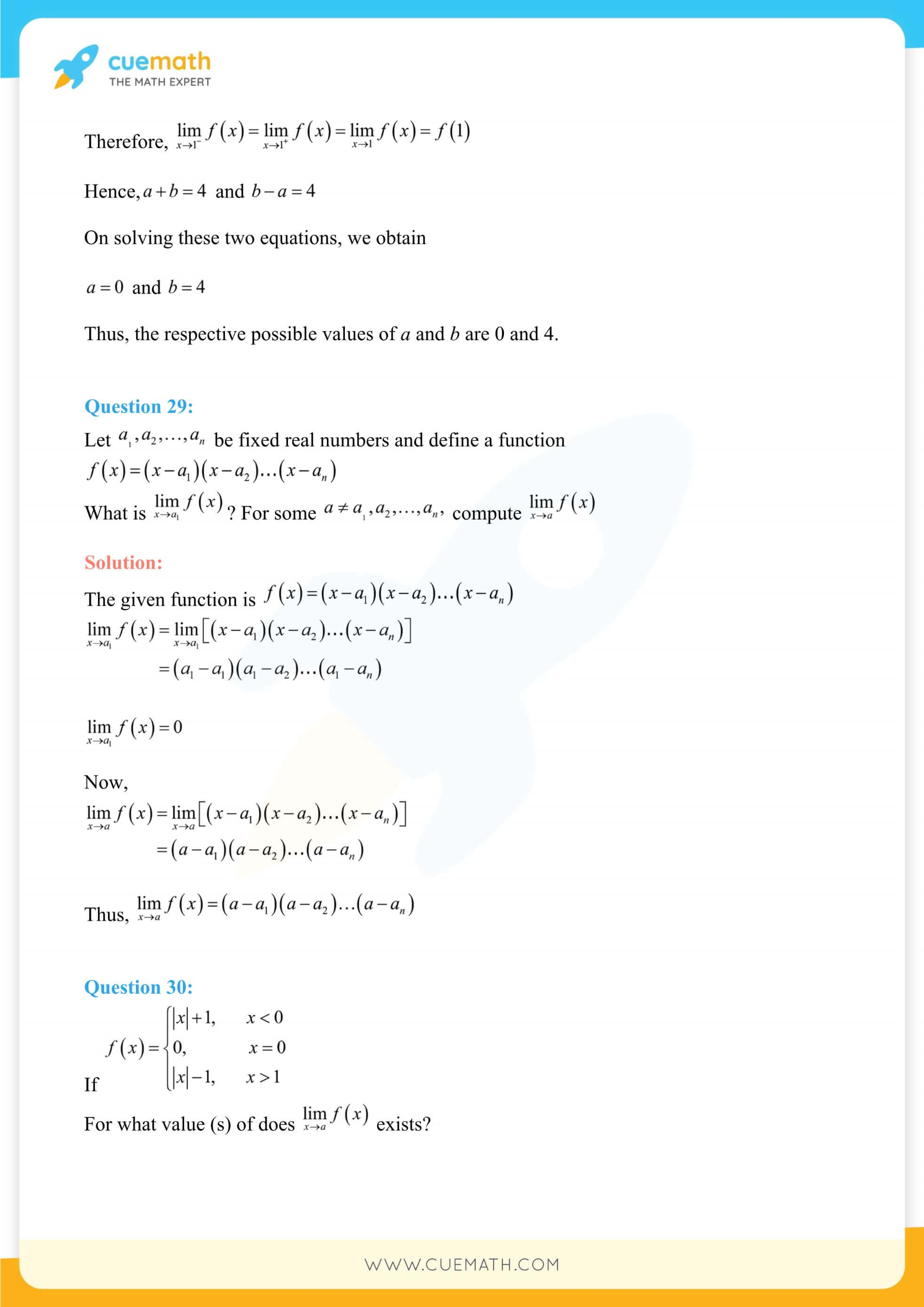
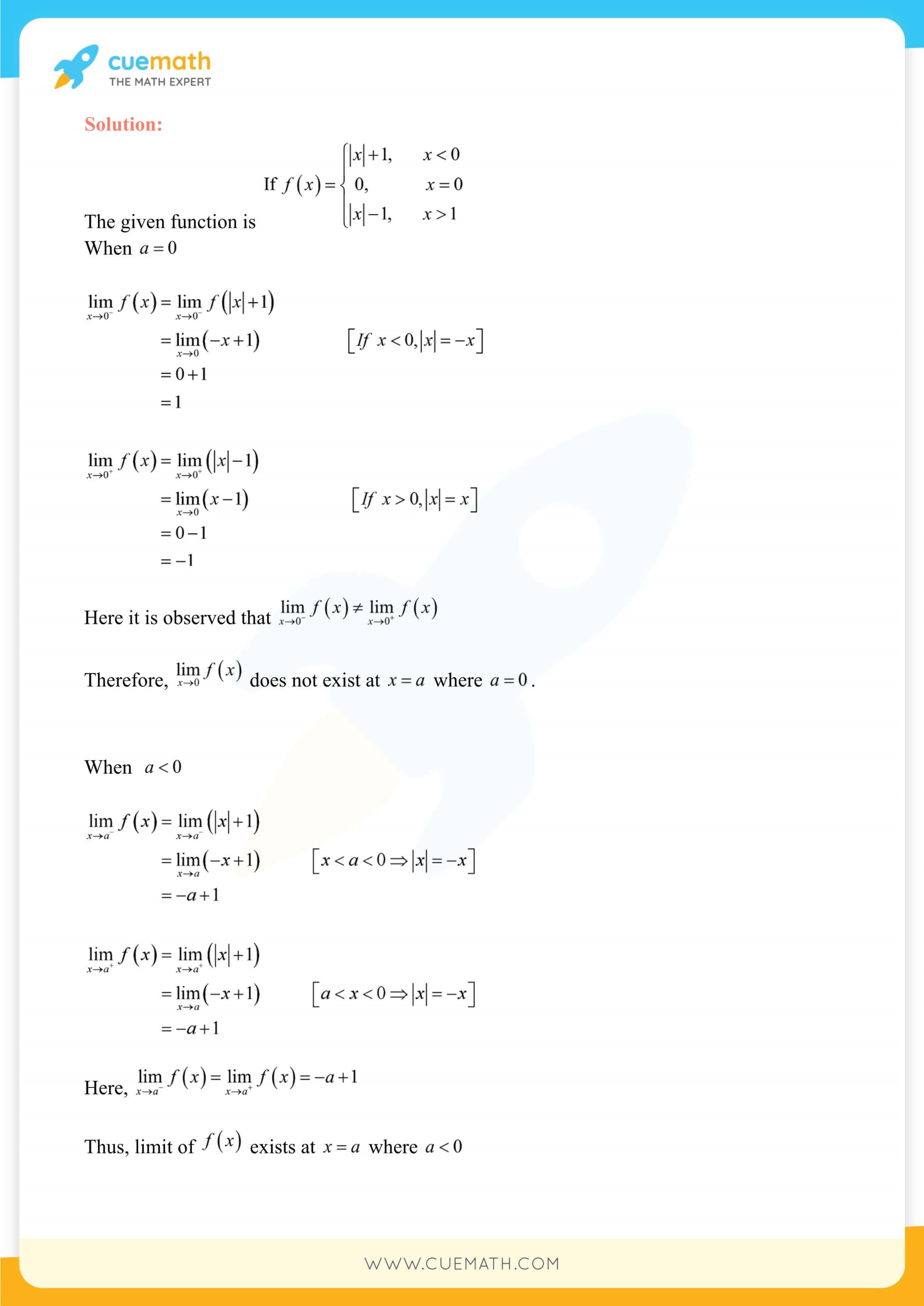
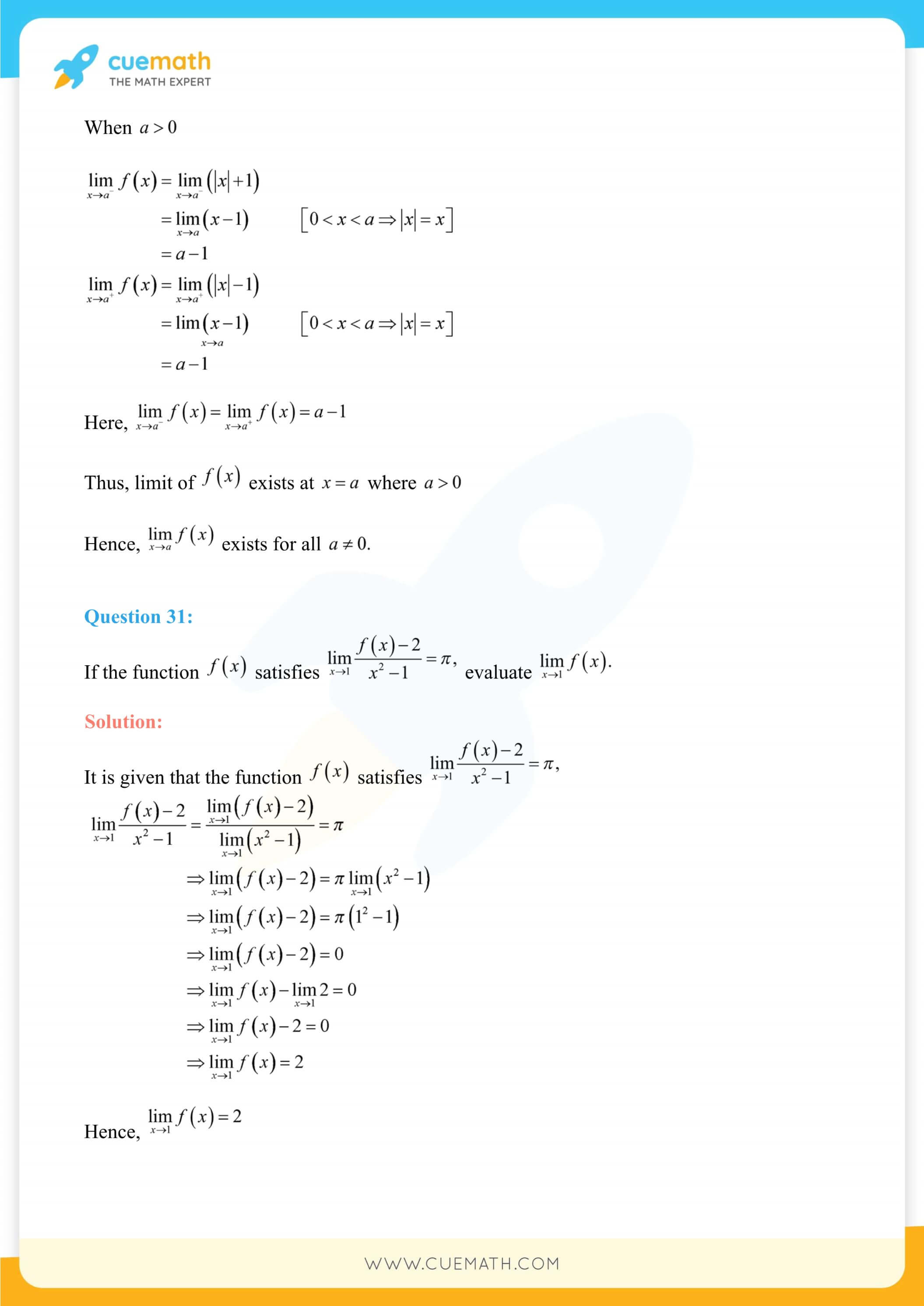
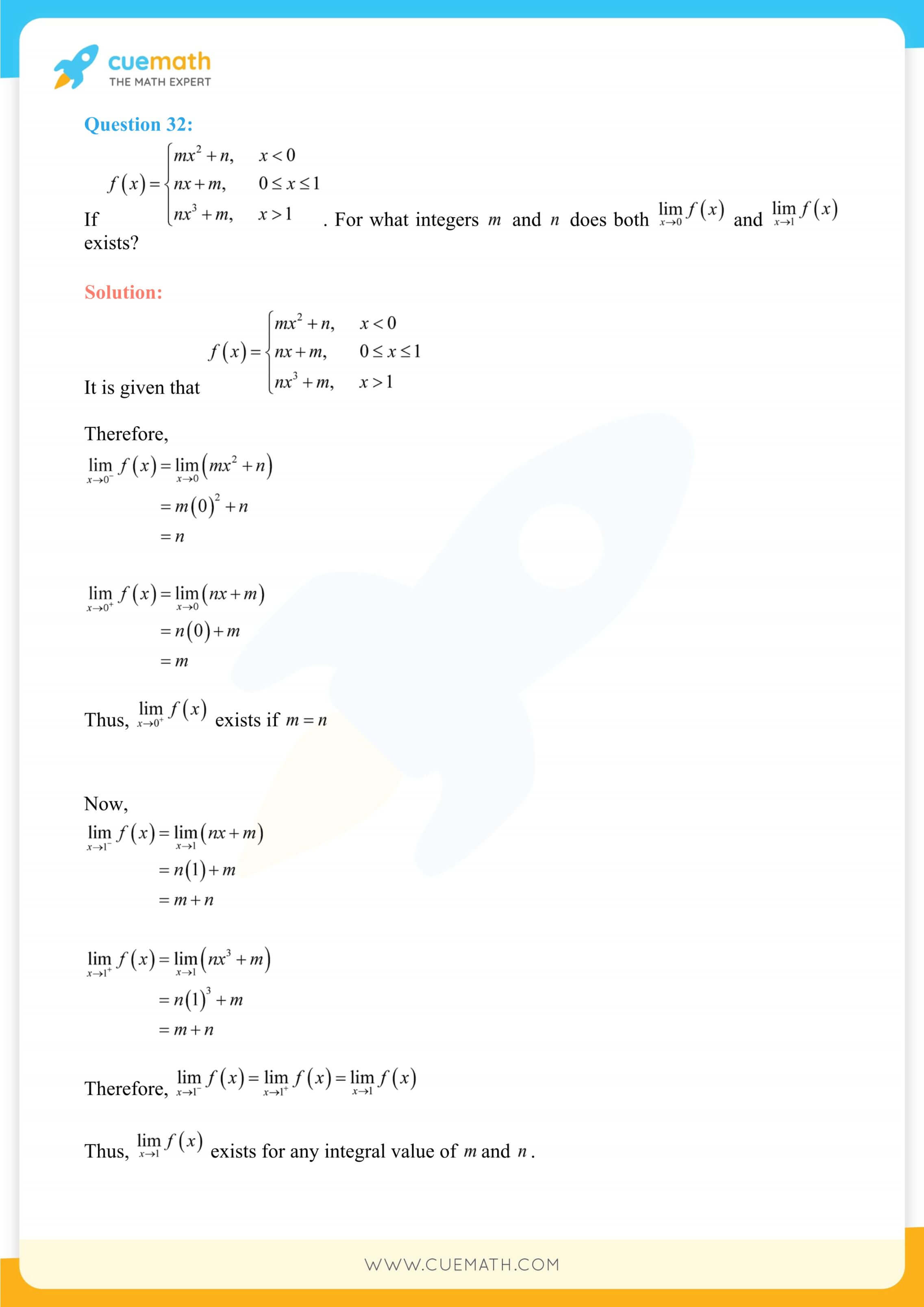
More Exercises in Class 11 Maths Chapter 13
- NCERT Solutions Class 11 Maths Chapter 13 Ex 13.2
- NCERT Solutions Class 11 Maths Chapter 13 Miscellaneous Exercise
NCERT Solutions Class 11 Maths Chapter 13 Exercise 13.1 Formulas
NCERT solutions class 11 maths chapter 13 exercise 13.1 limits and derivatives has several formulas that need to be applied to questions in order to solve them quickly. Some of them are listed below:
- lim x→a[f(x) + g (x)] = lim x→a f(x) + lim x→ag(x). The limit of sum of two functions is sum of the limits of the functions.
- lim x→a[f(x) - g (x)] = lim x→a f(x) - lim x→ag(x). The limit of difference of two functions is difference of the limits of the functions.
- lim x→a[f(x) . g (x)] = lim x→a f(x) . lim x→ag(x). The limit of product of two functions is product of the limits of the functions.
- lim x→a[f(x) / g (x)] = lim x→a f(x) / lim x→ag(x). The limit of quotient of two functions is quotient of the limits of the functions (whenever the denominator is non zero)
NCERT solutions class 11 maths chapter 13 exercise 13.1 is the perfect way to learn about limits and how functions behave under different conditions set by these limits.
Download Cuemath NCERT Solutions PDF for free and start learning!
visual curriculum
